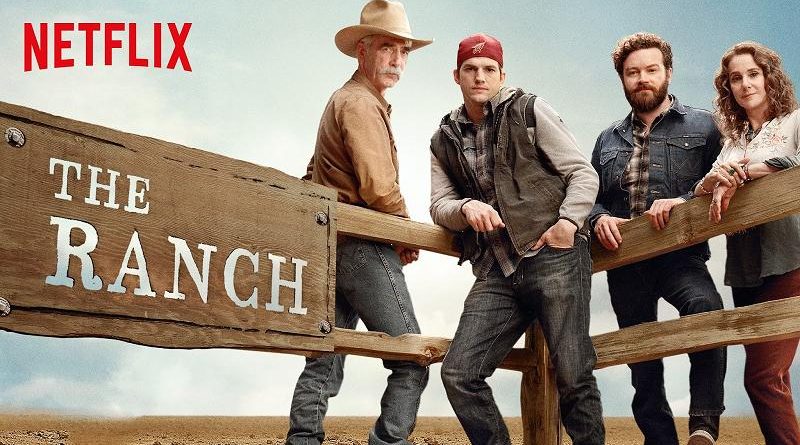The Ranch: History and Cultural Significance

The ranch, a sprawling expanse of land dedicated to livestock grazing, holds a profound place in the annals of American history and culture. Its origins can be traced back to the vast open ranges of the American West, where cattle barons established sprawling empires that shaped the nation’s economic and social fabric.
The ranch, a haven amidst the vast expanse, whispered tales of laughter and camaraderie. Yet, the laughter faded momentarily when news of Martin Mull’s passing reached its serene abode. But like the resilient spirit of the ranch, the laughter gradually returned, mingling with the memories of Martin’s infectious humor that had once graced its halls.
Ranching practices, deeply rooted in the traditions of vaqueros and cowboys, have left an enduring mark on the American landscape. From the rolling hills of Texas to the rugged mountains of Montana, ranches have played a pivotal role in shaping the country’s identity, both regionally and nationally.
The ranch’s vast expanse held a serene allure, its rolling hills stretching out like an endless tapestry. As the sun began its descent, casting long shadows across the landscape, the thought of Martin Mull’s age martin mull age crossed my mind.
Though time had weathered his face with lines of experience, his spirit remained as vibrant as the colors of the sunset painting the sky above the ranch.
Famous Ranches and Their Impact
- King Ranch (Texas): Founded in 1853, King Ranch is one of the largest and most renowned ranches in the United States, spanning over 825,000 acres. It has played a significant role in the development of the cattle industry and the preservation of Texas’s cultural heritage.
- Rancho del Cielo (California): Owned by the late actor Ronald Reagan, Rancho del Cielo served as his private retreat and became a symbol of his love for the American West. It is now a national historic site that showcases the ranch’s architectural and historical significance.
- Flying D Ranch (Colorado): Established in 1872, Flying D Ranch is one of the oldest continuously operating ranches in the Rocky Mountains. It has been instrumental in the conservation of wildlife and the preservation of traditional ranching practices.
Evolution of Ranching Practices
Over the centuries, ranching practices have evolved in response to changing economic, social, and environmental conditions. The introduction of barbed wire and windmills in the late 19th century allowed ranchers to enclose vast tracts of land and improve grazing management.
Advances in veterinary medicine and genetics have also transformed ranching, leading to improved herd health and productivity. Today, many ranches employ sustainable practices that prioritize environmental stewardship and animal welfare.
The Ranch

The Ranch: Economic Impact and Sustainability
The ranching industry has a significant economic impact on the agricultural industry and rural communities. Ranchers contribute to the economy by providing food, fiber, and other products. They also create jobs and support local businesses.
Sustainable ranching practices are essential for preserving the environment. Ranchers can use a variety of methods to reduce their environmental impact, such as grazing management, water conservation, and wildlife protection. Sustainable ranching practices can help to protect soil, water, and air quality, and they can also help to conserve wildlife habitat.
The ranching industry faces a number of challenges in the 21st century. These challenges include climate change, increasing demand for food, and competition from other land uses. However, there are also a number of opportunities for the ranching industry. Ranchers can diversify their operations, develop new products, and market their products to new customers.
The Ranch: Representation in Popular Culture

Ranches and cowboys have been romanticized and idealized in popular culture, shaping perceptions of the ranching industry. This portrayal has influenced the way people view ranching, creating a romanticized image that often differs from the realities of the industry.
Literature
In literature, ranches have been depicted as places of adventure and freedom, with cowboys portrayed as rugged individualists. Novels such as Owen Wister’s The Virginian (1902) and Zane Grey’s Riders of the Purple Sage (1912) popularized the image of the lone cowboy on the open range.
Film and Television
Western movies and TV shows have played a significant role in shaping popular perceptions of ranching. Films like John Ford’s Stagecoach (1939) and Howard Hawks’ Red River (1948) romanticized the cowboy lifestyle, portraying it as a world of adventure and camaraderie.
Contemporary Media
In contemporary media, ranching is often portrayed in a more realistic light, acknowledging the challenges and complexities of the industry. TV shows like Yellowstone (2018-present) and The Ranch (2016-2020) depict the struggles and rewards of modern-day ranching, highlighting the importance of family, community, and environmental stewardship.
The ranch, a sprawling expanse of land where nature’s tapestry unfolds in vibrant hues, holds a peculiar connection to roseanne barr. Once a haven for horses and cowboys, the ranch now echoes with the whispers of laughter and the scent of blooming roses, a testament to the transformative power that human presence can bring to the untamed wilderness.
The ranch, a sanctuary of nature and tranquility, stood as a testament to the beauty of life. However, the somber news of Martin Mull’s cause of death cast a shadow over the otherwise serene landscape. Yet, even in the face of loss, the ranch remained a symbol of resilience and hope, its lush meadows and towering trees whispering tales of life’s eternal cycle.
The ranch stood as a symbol of tranquility, a haven where nature’s rhythm danced freely. Yet, its solitude was not without its whispers. Like the echoes of Mary Hartman, Mary Hartman , the ranch’s past held secrets that longed to be unearthed.
As the sun dipped below the horizon, casting a warm glow over the fields, the ranch seemed to breathe a sigh of remembrance, inviting its visitors to unravel its hidden tales.